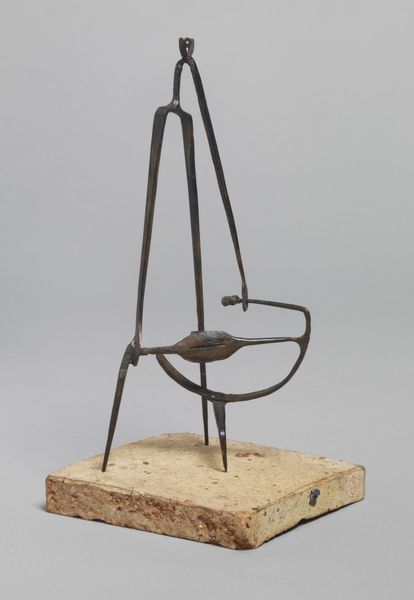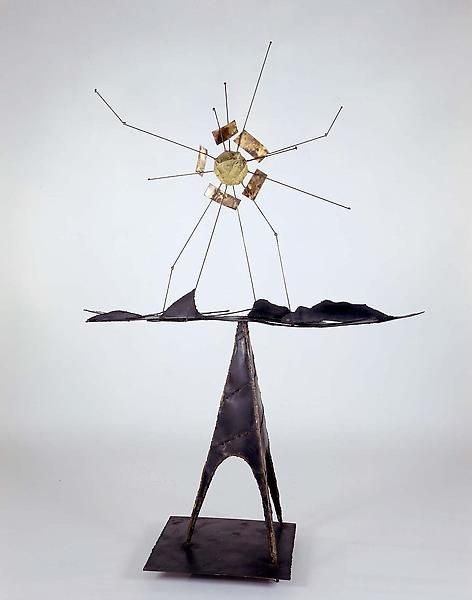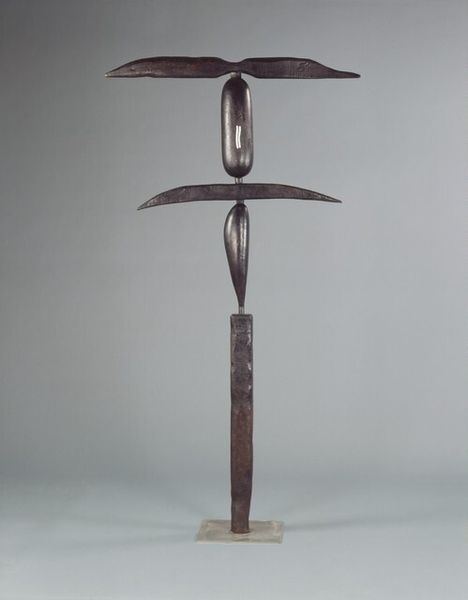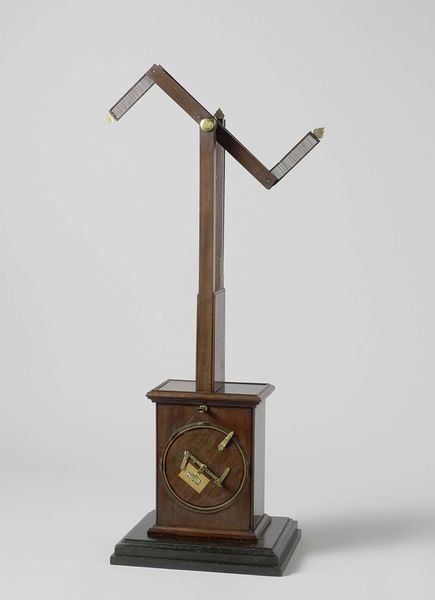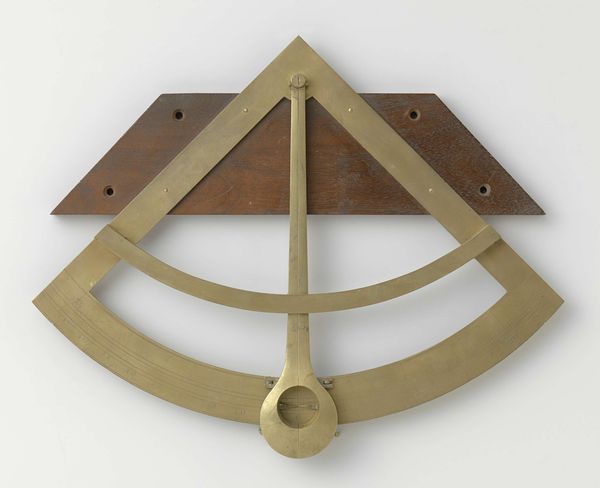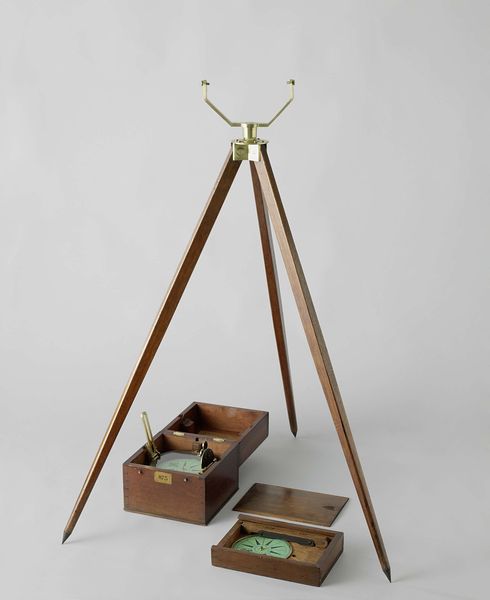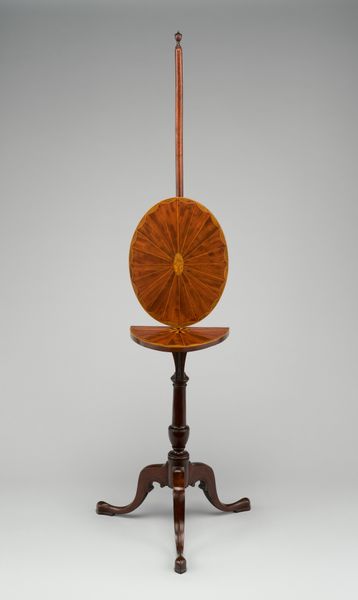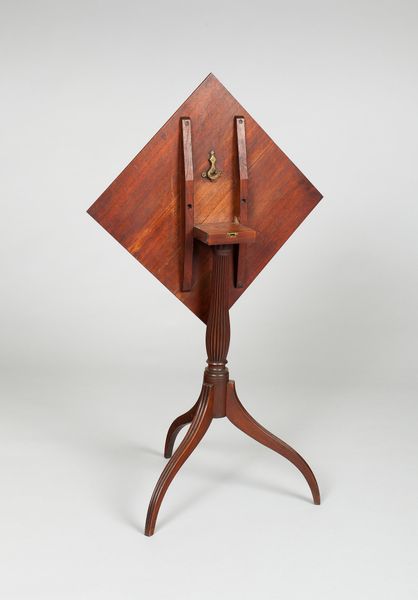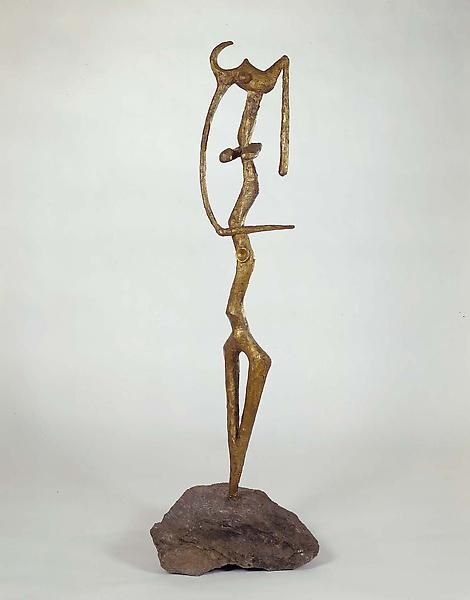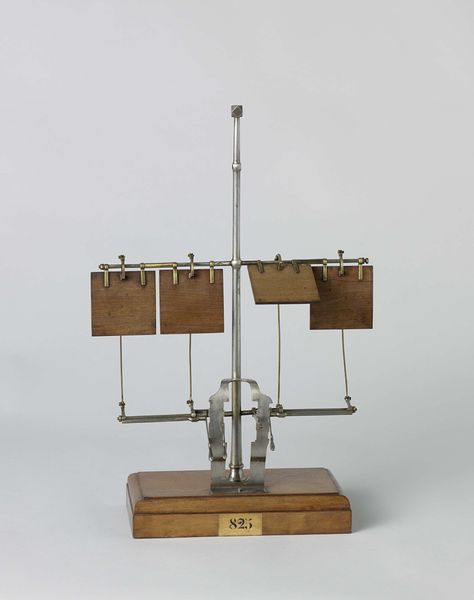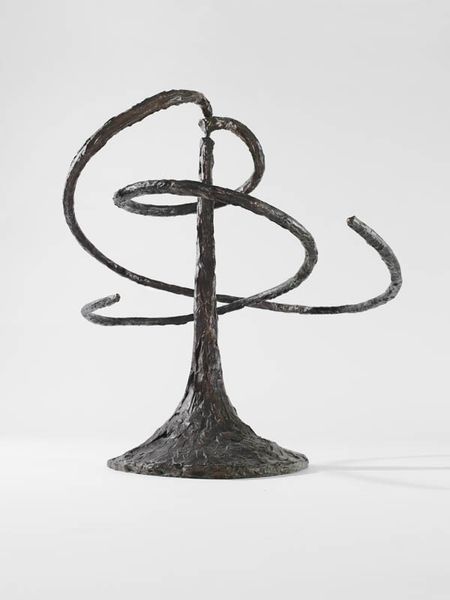
Dimensions: overall: 164.1 x 68.6 x 67 cm (64 5/8 x 27 x 26 3/8 in.)
Copyright: National Gallery of Art: CC0 1.0
Alberto Giacometti made ‘The Chariot’ out of bronze, and we think sometime around 1950. The sculpture presents us with a striking, elongated figure standing atop a wheeled structure. But what does this figure convey to us? Is it a triumphant ruler, or a symbol of post-war fragility? Giacometti was a Swiss artist working in Paris. His work often reflected the existential anxieties of the mid-20th century. We need to consider the cultural context of post-war Europe, where traditional notions of power and progress had been deeply shaken. The chariot, historically associated with strength, is here rendered delicate and skeletal. The spindly figure, in turn, evokes vulnerability. Art historians often consult the artist's writings, and the social history of his time, to better understand the work. In this sculpture, we find an image which asks us to consider the meaning of power in a world scarred by conflict. The sculpture critiques the institutions that uphold the idea of progress.
Comments
No comments
Be the first to comment and join the conversation on the ultimate creative platform.
